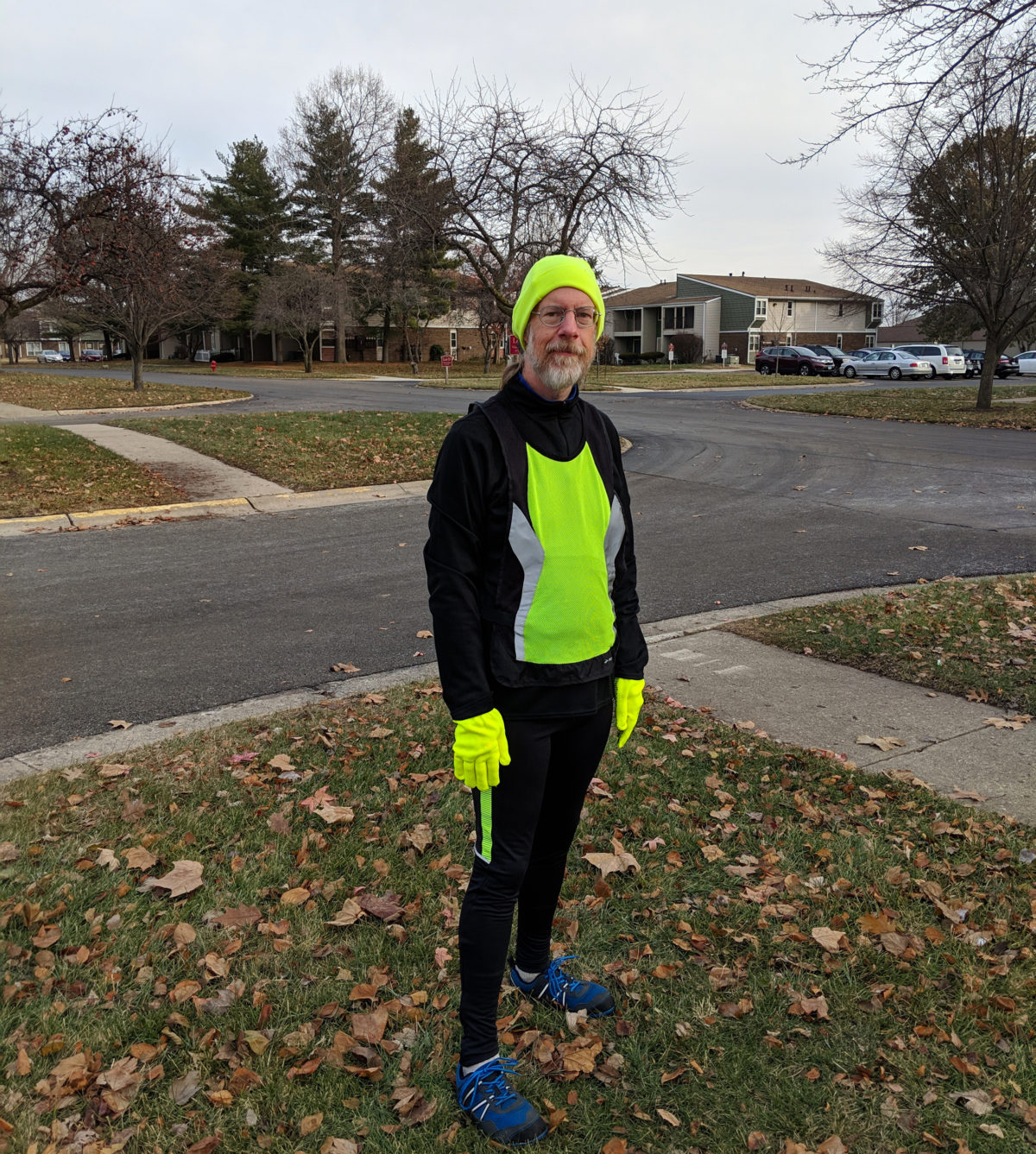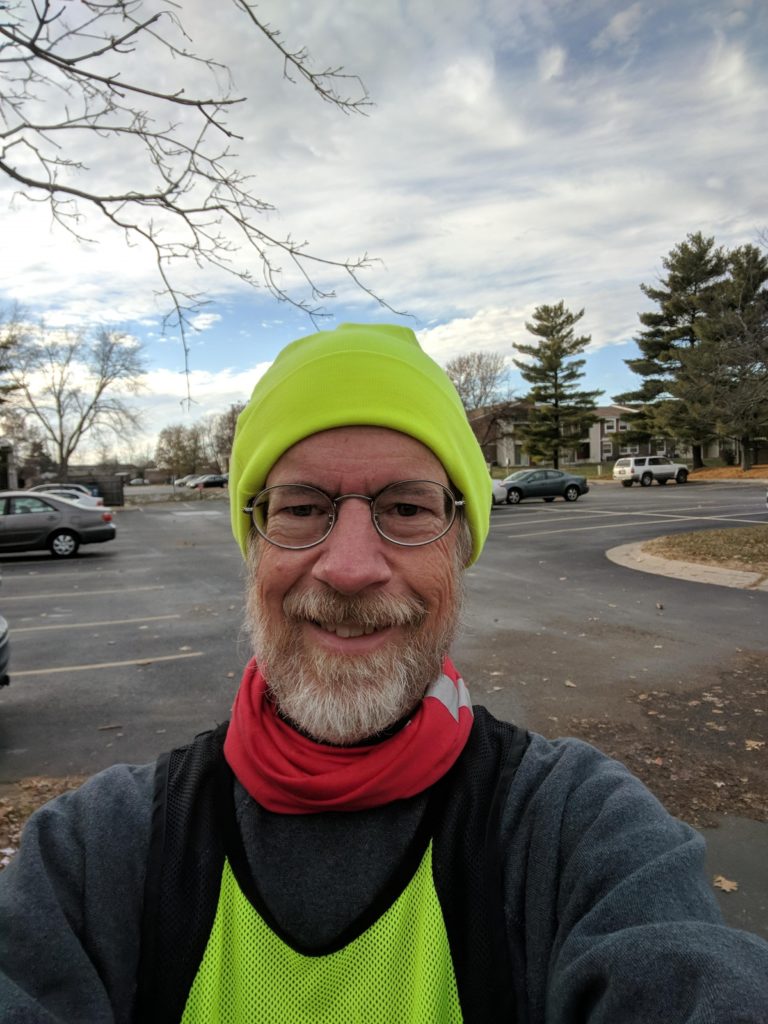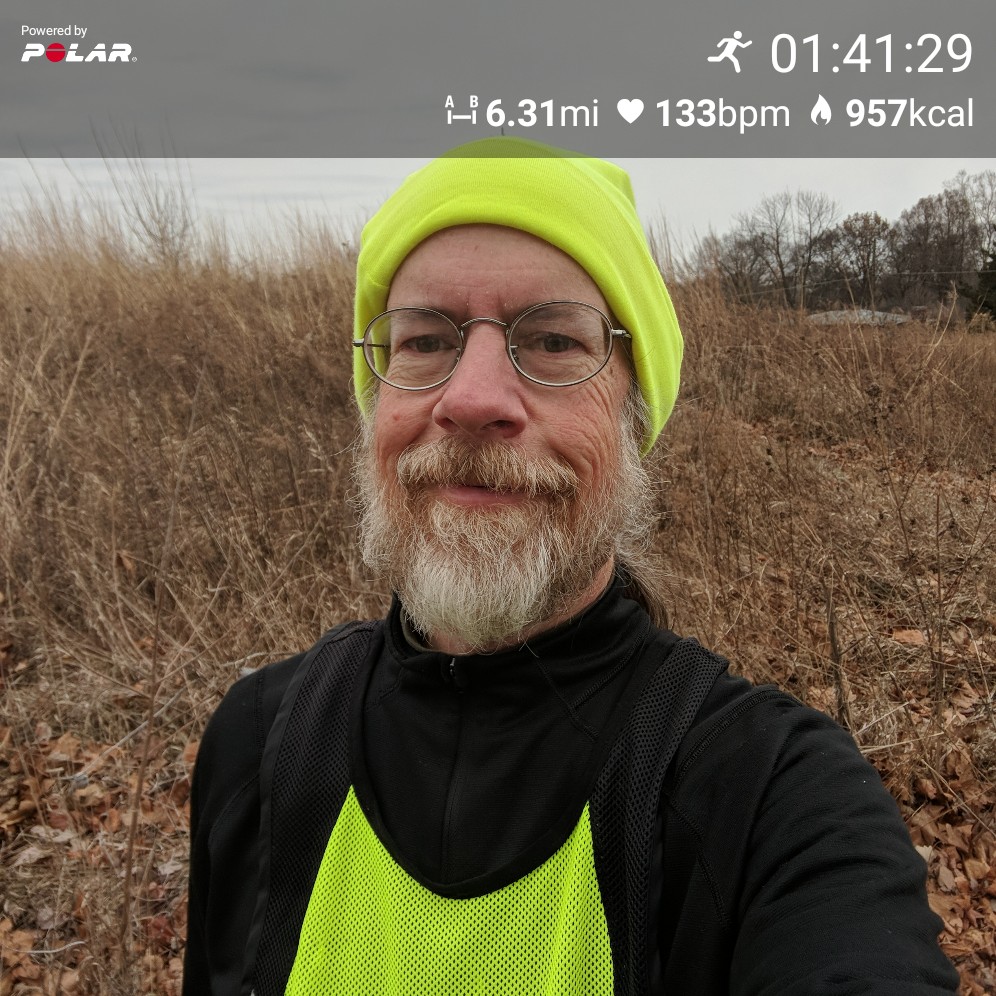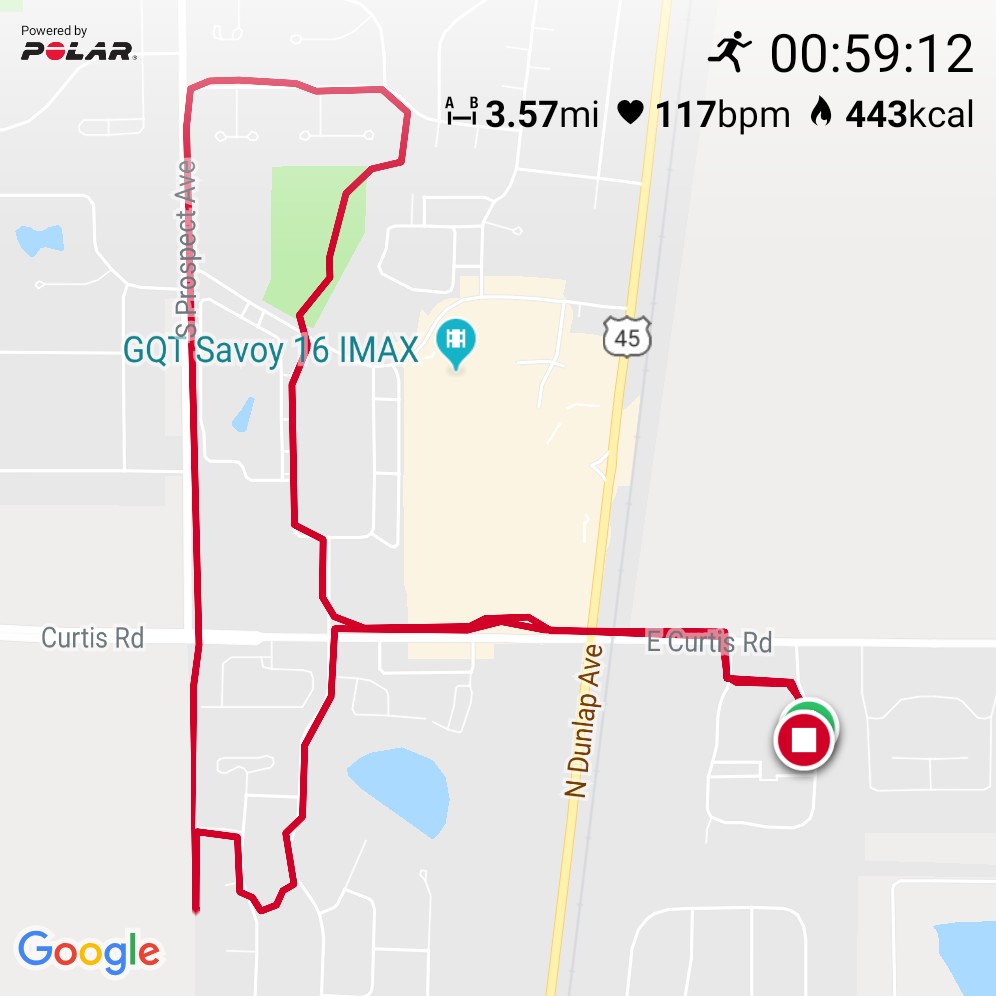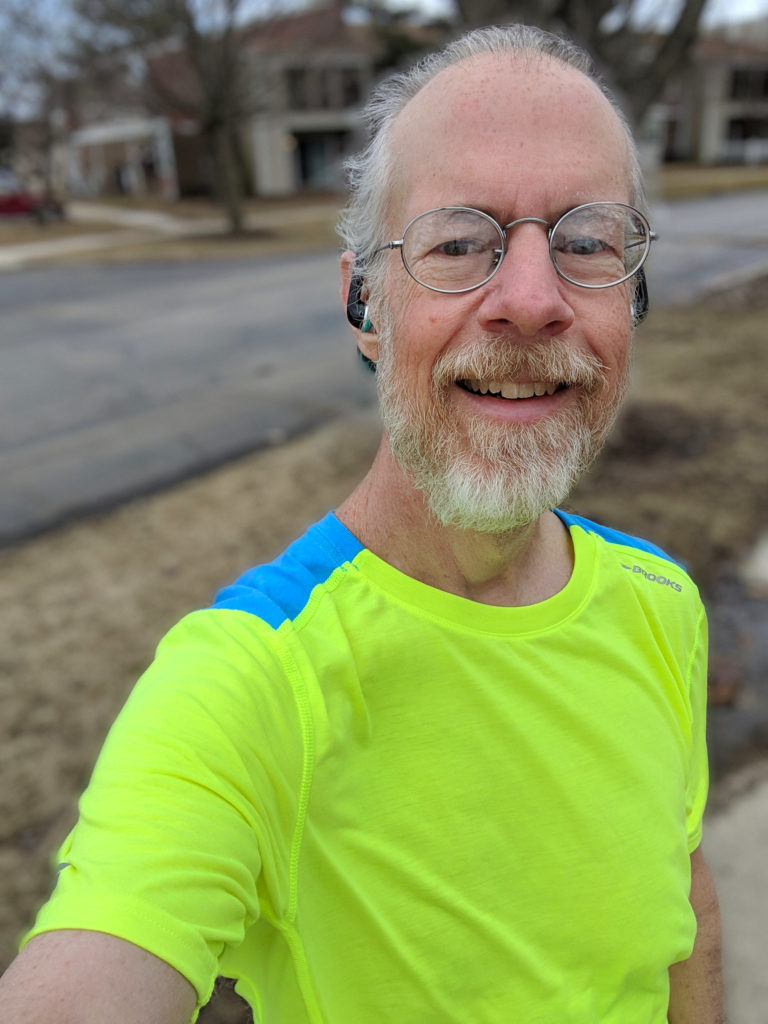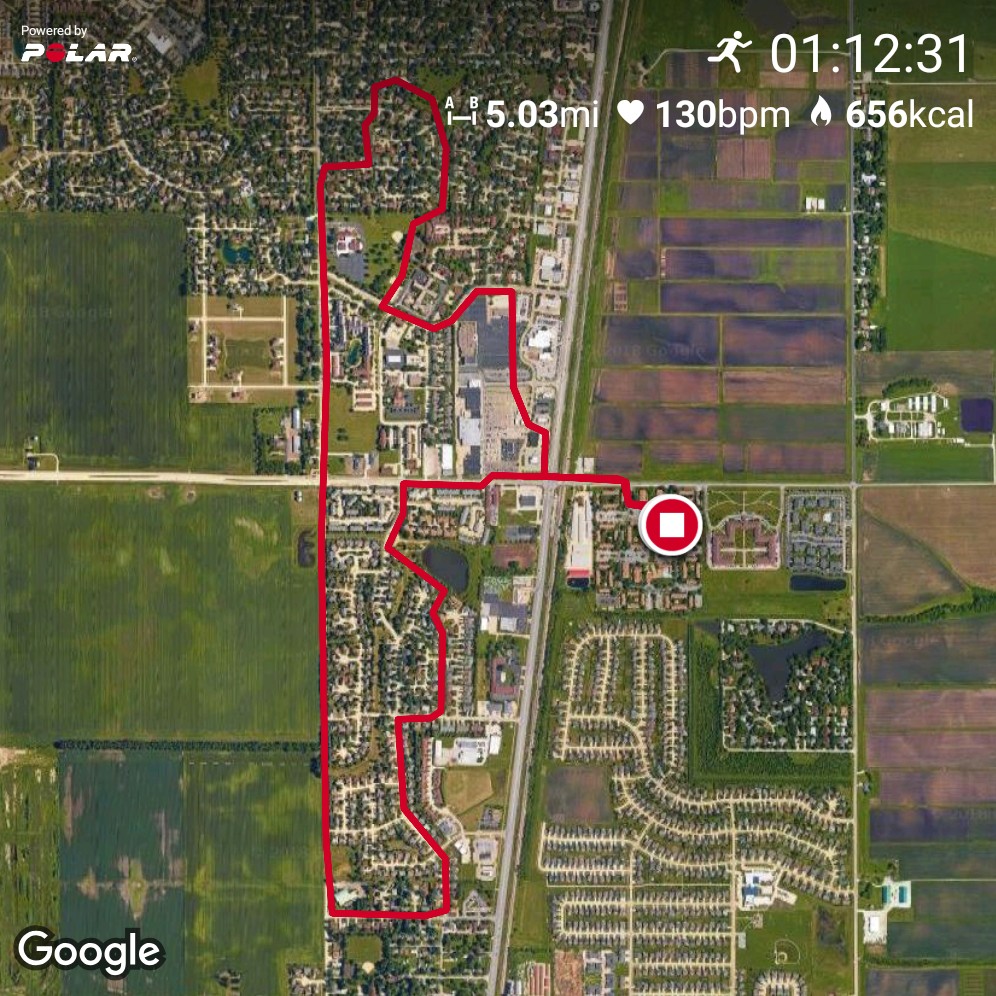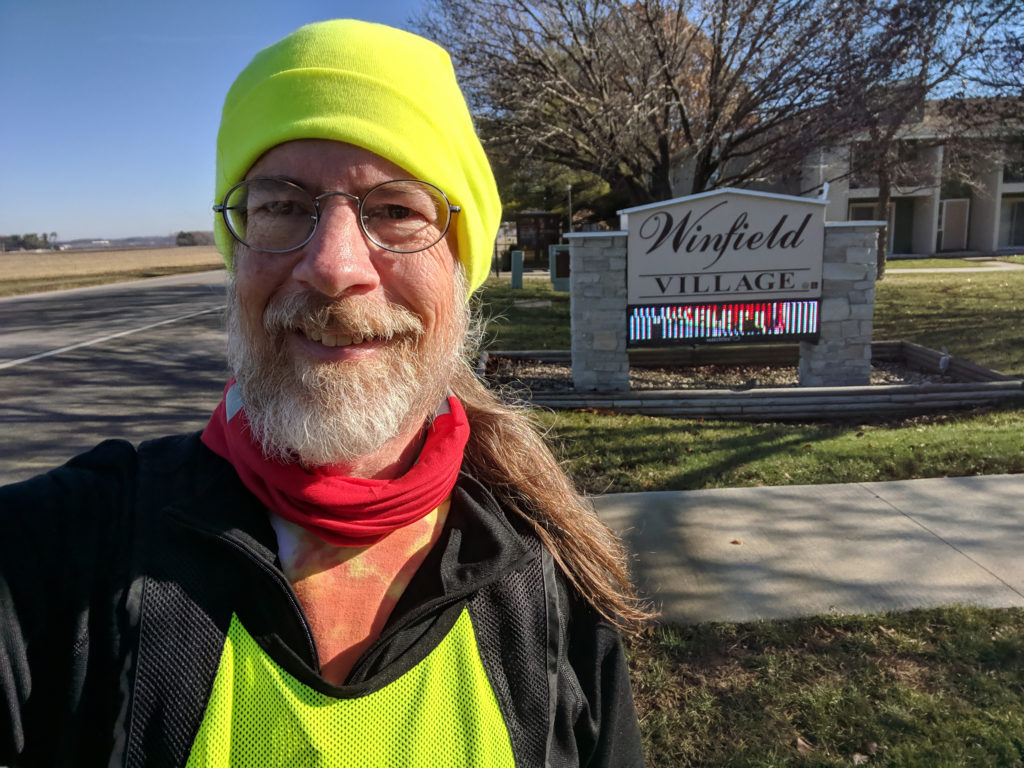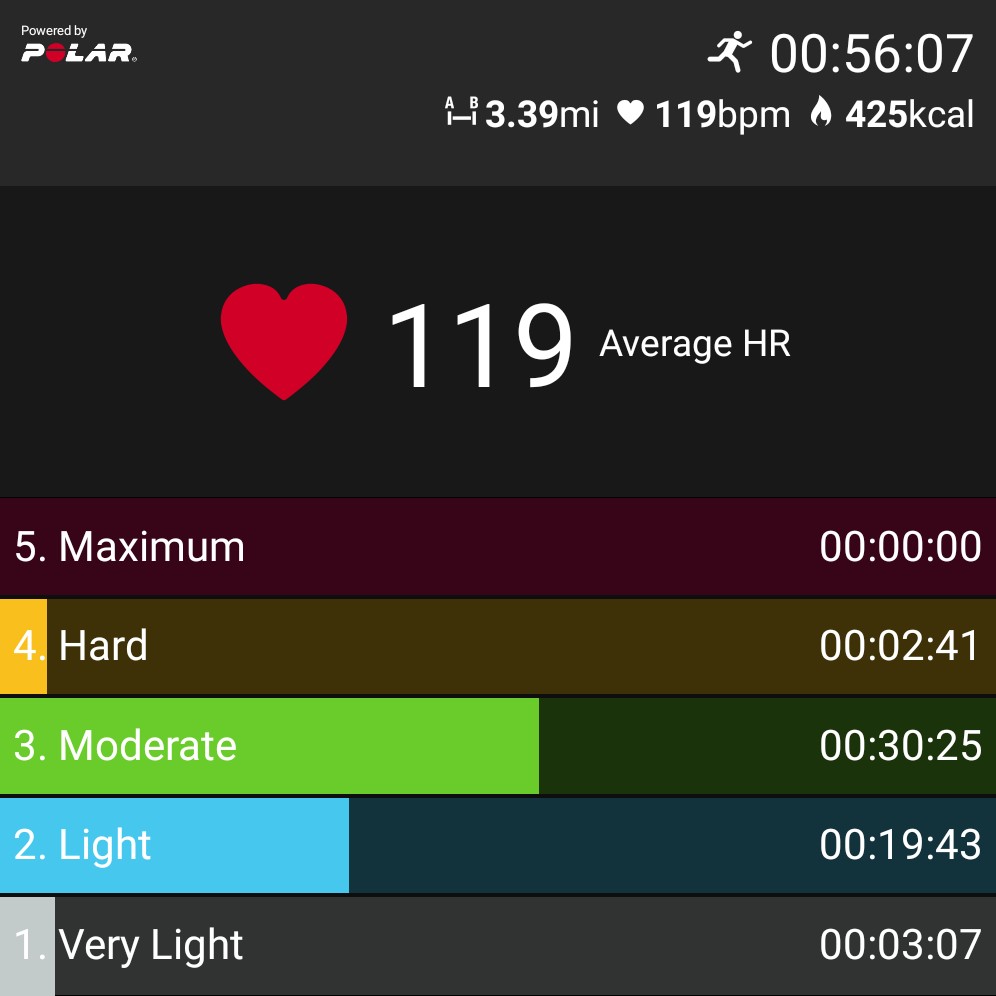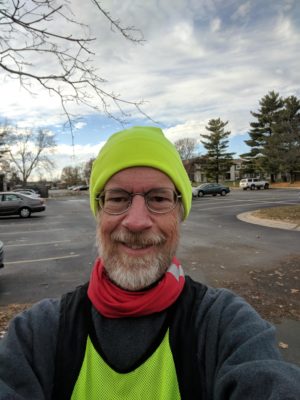On Sunday I ran in the Rattlesnake Master Run for the Prairie 10k.

Usually I expect that I’ll write a post when I participate in an event like that, but it turns out that I don’t have a lot to say about it. It went fine. I ran very slowly, which I expected because I’d done all of my training very slowly, but I did not come in last, which was nice.
I’d suffered with a nagging sore foot for several weeks leading up to the race. The pain was in the heel of my right foot, which made me figure it was probably plantar fasciitis. I think I’ve figured out though that it’s actually peroneal tendonitis. Understanding that gives me a clue toward recovery. The peroneal tendon, which reaches down the outside of your ankle, through the heel, and then forward across to the inside edge of the front of your foot, is heavily involved in balancing, especially standing on one foot. I do a lot of single-leg standing as part of my taiji practice and teaching, and since figuring this out I’ve been especially careful about being gentle with myself in this part of the practice, and in just a few days I’ve finally seen dramatic improvement.
The realization didn’t help in time for the race though, and my foot was a little sore right along. It wasn’t so sore that I thought I was doing real damage though, so I just ran the race anyway. It did impact my gate a bit, which meant that my opposite-leg knee started hurting about halfway through the race.
Part of the reason for this post is to test the GPX exporting at Polar (which had been broken for a while) and the GPX tracking plug-in that I’ve got here (which has been updated a couple of times since I last successfully got a GPX track exported from Polar). So, here’s the track of my run. The heart rate data doesn’t seem to be working.
[sgpx gpx=”/wp-content/uploads/gpx/Philip_Brewer_2019-11-03_08-55-36.gpx”]
(I didn’t want to fiddle with my phone at the start or finish of the race, so I started tracking my run about 5 minutes before the start of the race, and then I forgot to turn it off until about 5 minutes after I crossed the finish line, so both the time and the distance are a little off.)
My official time was 1:17:13.4 meaning a 12:26/mile pace. That’s as fast as I’ve run in years. (Overall results. Age-group results.)
It was pretty cold at the start—cold enough that I didn’t manage to get my race number in my pre-race selfie:
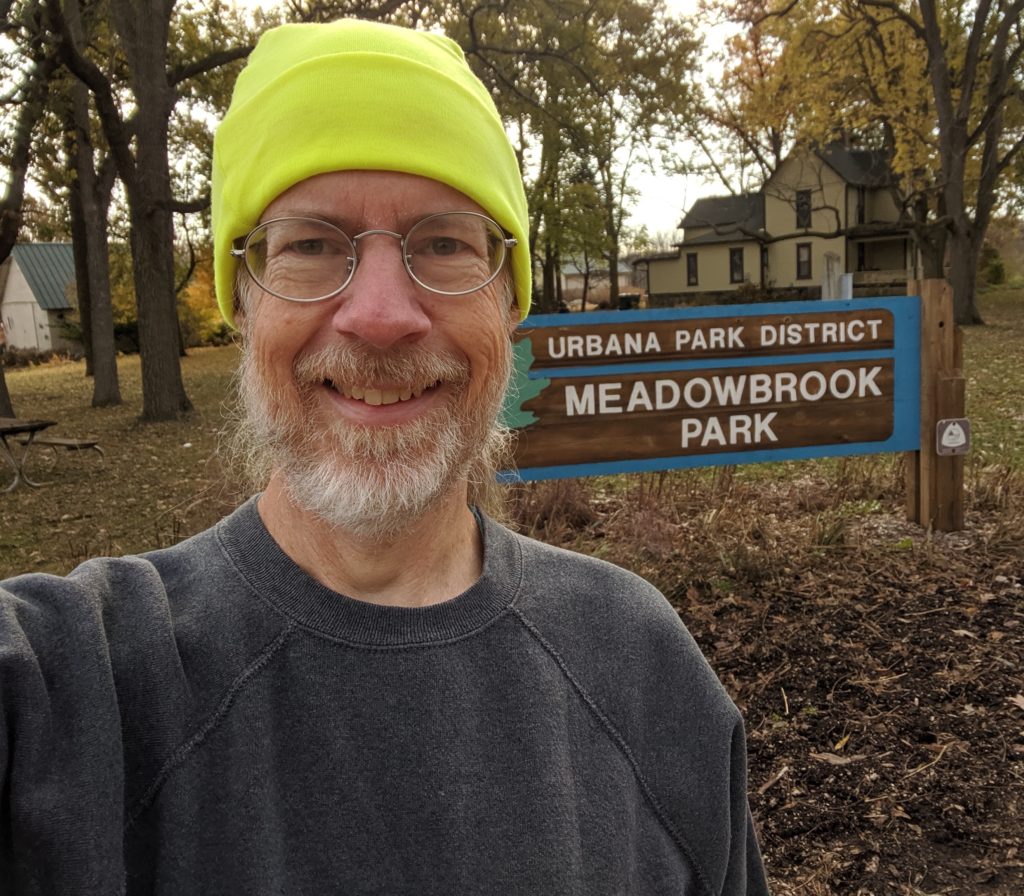
It had warmed up a lot by the end of the race, when I captured the selfie up at the top with Jackie (who along with a lot of the Master Naturalists had volunteered in the race).

